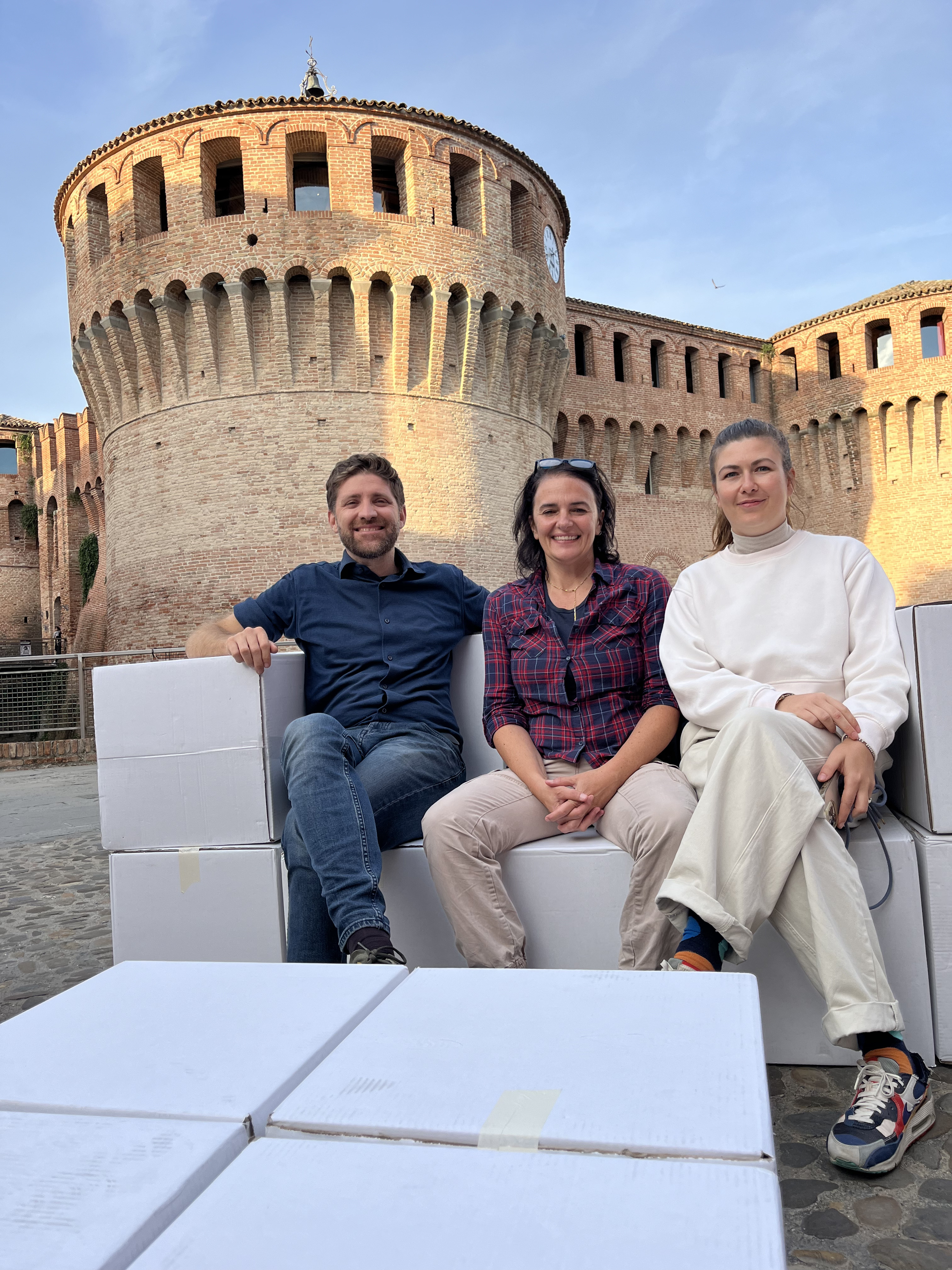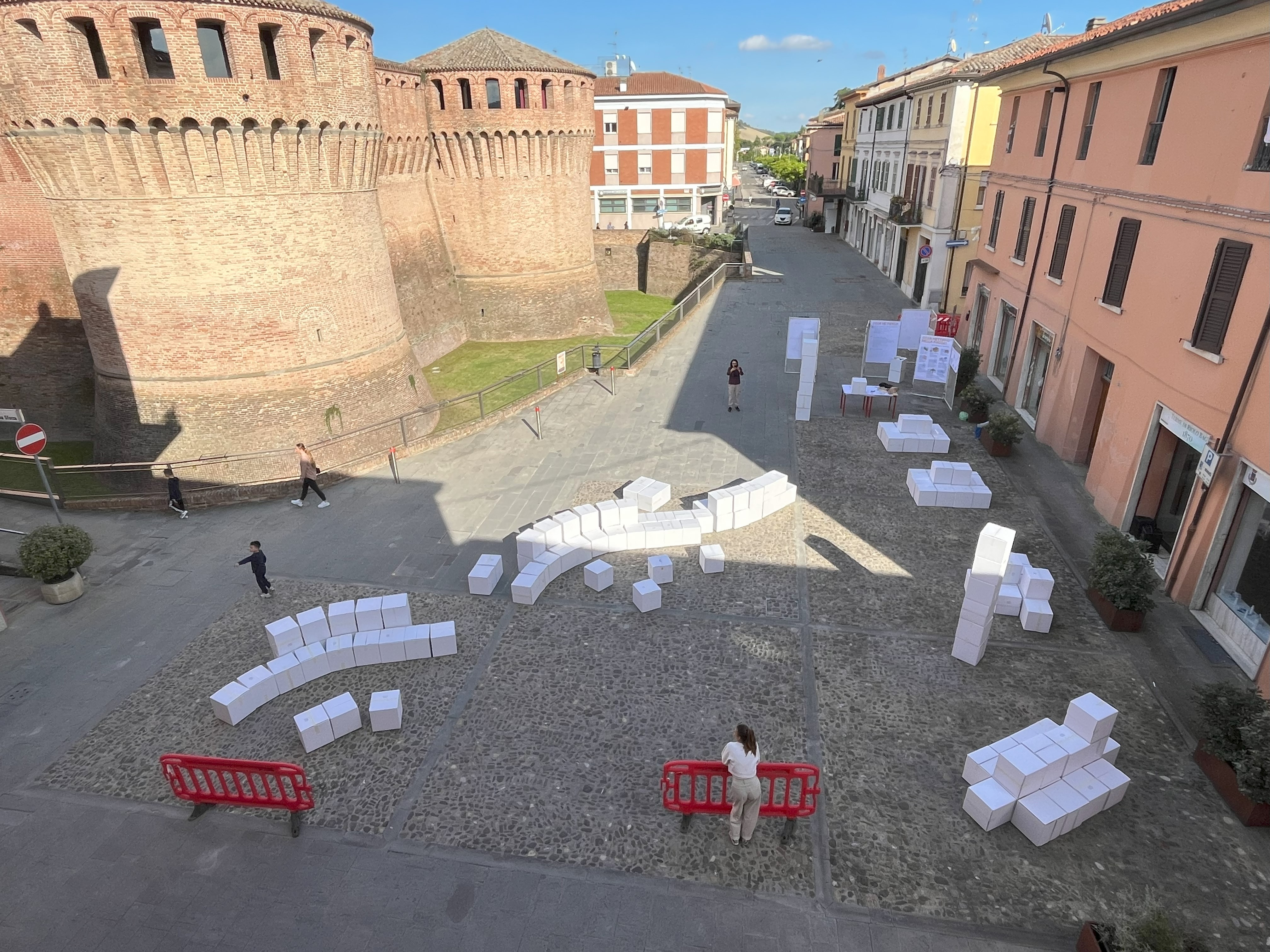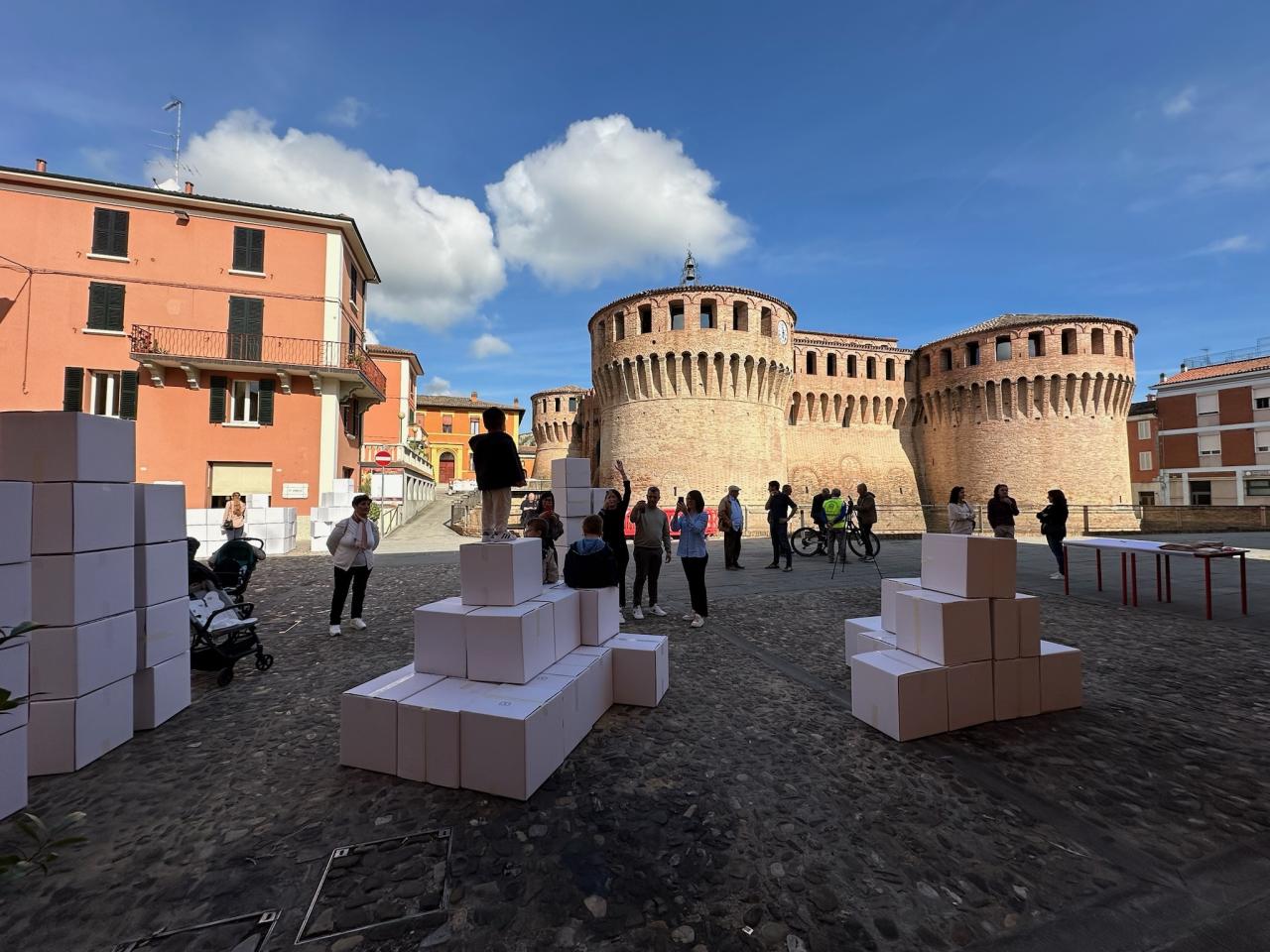On a quiet October Saturday, Piazza della Rocca in Riolo Terme was transformed as 200 cardboard cubes took over the town’s central space, usually reserved for car transit and parking. This unusual occupation was led by Architect Lucio Rubini, his team, and members of the Sustainable Mobility and Smart City Unit of the Union of Romagna Faentina. Together, they organized an open-air collective workshop to reimagine the square as a more accessible and human-centered space.
We spoke with Lucio Rubini, Coordinator of the URISE Master’s Program at IUAV University of Venice (luciorubini.it), about the origins and impact of this innovative initiative.

Can you tell us who is behind this disruptive action in Riolo Terme?
Of course. We are a group of four professionals with backgrounds in architecture and urban planning, specializing in the development of urban innovation projects with a strong participatory approach. We’re not a traditional firm; we work from different locations and collaborate with the IUAV University of Venice, where I coordinate the URISE master’s program, focused on urban regeneration and social innovation. This project in Riolo Terme was entrusted to our team to carry out a targeted intervention for reactivating public space through an event.
What was the main objective of this project?
The aim was to prototype a desire expressed in a prior participatory process: to create an initiative capable of reactivating a public space. The challenge wasn’t merely to “remove cars” from the square for a day but to demonstrate how the space could be used differently. We wanted to create an event that wasn’t an end in itself but instead opened a dialogue and sparked reflections.
How did you translate this idea into a practical intervention?
We brought 200 modular cubes to the square, designed as a simple and versatile tool to engage the community. The idea was to create an open-air collective workshop with strong visual impact while remaining playful and accessible. The cubes not only transformed the physical space but also stimulated spontaneous interaction among participants, including children and adults. This solution, specifically designed for Riolo Terme, was a first for us as well.
What was the community’s reaction?
Participation was good, especially considering Riolo Terme is a small town. Around a hundred people attended, including locals and visitors. The event generated interest and showed how a neglected square could be transformed into a vibrant space. Interestingly, we didn’t receive any complaints about traffic restrictions or the lack of parking, which is a positive sign of the initiative’s acceptance.
Were there any unexpected aspects or configurations that surprised you?
The playful element led to unexpected results. Children, with their creativity, built structures we hadn’t anticipated. This unpredictability is a fundamental part of our approach: allowing room for free interpretation and interaction by participants.
What advice would you give local administrators for the future of the square?
My first suggestion would be to start a structured discussion about the square’s future, going beyond simply removing cars. To truly reactivate the space, it’s essential to imagine new and meaningful uses, such as repurposing the underutilized ground-floor spaces.
And what about those looking to replicate a similar initiative elsewhere?
It’s crucial to propose activities that are light, playful, and welcoming, capable of surprising and engaging participants. Additionally, setting up a feedback collection point is essential to structure a dialogue with attendees. The visual and interactive performance of the event is a key element to spark debates and reflections.



